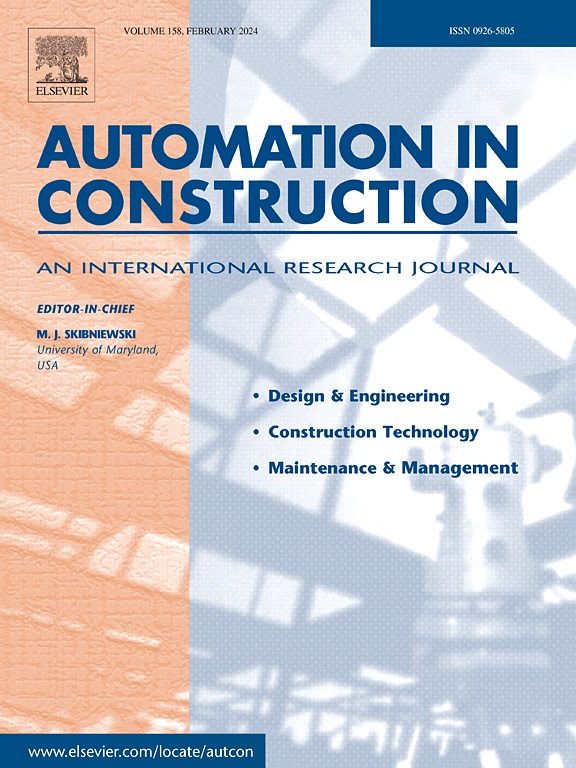基于机器学习代理模型的无限旋转自由度faradade系统两阶段优化
IF 11.5
1区 工程技术
Q1 CONSTRUCTION & BUILDING TECHNOLOGY
引用次数: 0
摘要
增加动力学farade系统(KFS)的自由度(dfs)可能会提高环境适应性,但由于高维设计空间,在机械可行性和优化复杂性方面提出了挑战。本文研究了多自由度KFS的机构设计和优化策略,并评估了与运动和控制自由度增加相关的性能权衡。提出了一种无限旋转自由度(IRF)模型并进行了实验验证,将基于机器学习的代理模型与静态特征选择和运动控制的优化算法相结合,开发了一种基于两阶段代理的多自由度faradade系统优化框架。对比性能分析表明,与传统百叶相比,IRF系统显著改善了日光分布和热调节,多自由度运动增强了日光分布,增加了控制自由度,从而更精确地减少了眩光。这些发现突出了多自由度KFS的可行性和环境优势。未来的研究应解决运动连续性问题,以提高操作效率。本文章由计算机程序翻译,如有差异,请以英文原文为准。
Two-stage optimization of infinite rotation-freedom façade systems using machine learning surrogate models
Increasing the Degrees Of Freedom (DOFs) of Kinetic Façade Systems (KFS) potentially enhances environmental adaptability but presents challenges in mechanical feasibility and optimization complexity due to high-dimensional design spaces. This paper investigates the mechanism design and optimization strategies for multi-DOF KFS, and assesses the performance trade-offs associated with increased motion and control freedom. An Infinite Rotation Freedom (IRF) prototype is proposed and experimentally validated, and a two-stage surrogate-based optimization framework is developed for multi-DOF façade systems by integrating machine learning-based surrogate models with optimization algorithms for both static feature selection and kinetic motion control. Comparative performance analyses demonstrated that the IRF system significantly improves daylight distribution and thermal regulation compared to conventional louvers, with multi-DOF motion enhancing daylight distribution and increased control freedom enabling more precise glare mitigation. These findings highlight the feasibility and environmental advantages of multi-DOF KFS. Future research should address movement continuity issues to improve operational efficiency.
求助全文
通过发布文献求助,成功后即可免费获取论文全文。
去求助
来源期刊

Automation in Construction
工程技术-工程:土木
CiteScore
19.20
自引率
16.50%
发文量
563
审稿时长
8.5 months
期刊介绍:
Automation in Construction is an international journal that focuses on publishing original research papers related to the use of Information Technologies in various aspects of the construction industry. The journal covers topics such as design, engineering, construction technologies, and the maintenance and management of constructed facilities.
The scope of Automation in Construction is extensive and covers all stages of the construction life cycle. This includes initial planning and design, construction of the facility, operation and maintenance, as well as the eventual dismantling and recycling of buildings and engineering structures.
 求助内容:
求助内容: 应助结果提醒方式:
应助结果提醒方式:


